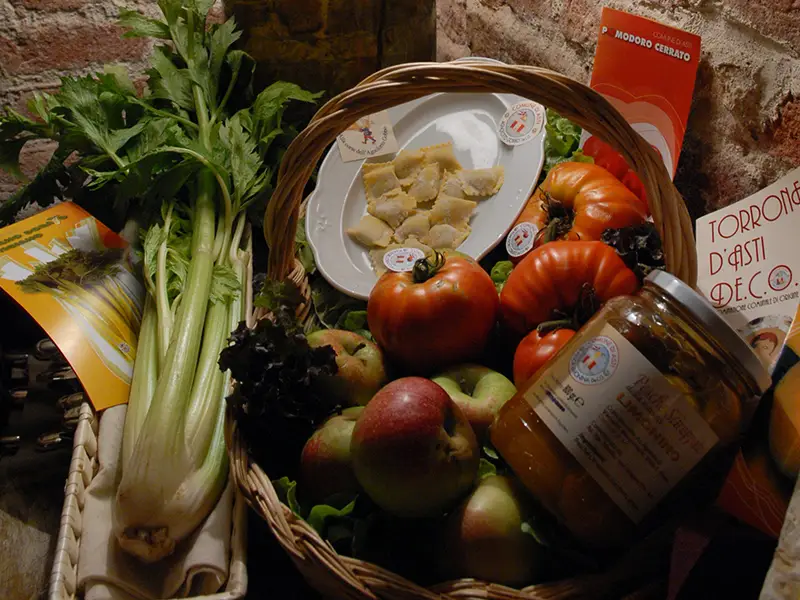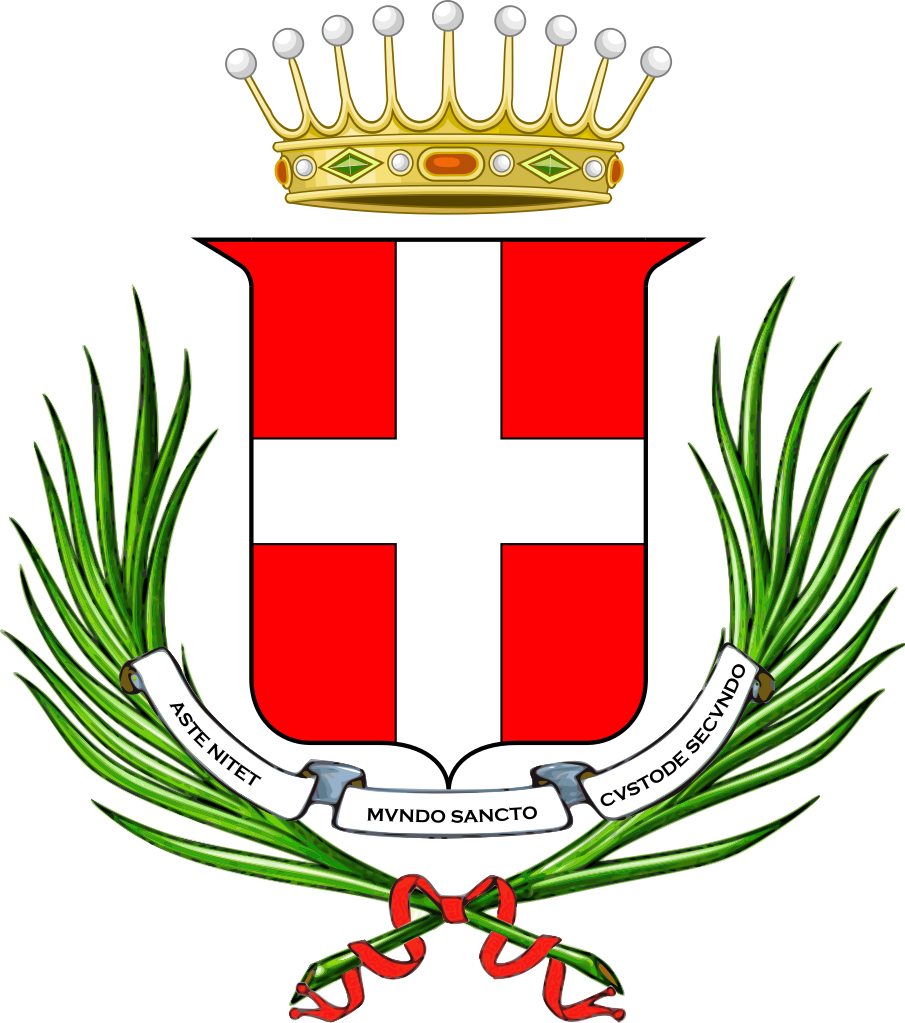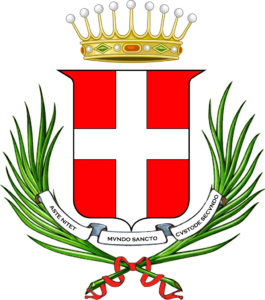The municipal denomination of origin
The municipal denomination of origin, or De.Co., is a certification of the agri-food sector which aims to protect typical products belonging to a particular municipal area.
The De.Co. Products
Pesca Limonina (Limonina Peach)
The name limonina derives from the characteristic shape of the lemon with protruding apex. It is a variety of yellow-fleshed peaches with a sweet sour taste with a slightly bitter aftertaste, which is well suited to traditional consumption, the preparation of sweet and savory dishes and the production of syrups. The fruit is moderately juicy, aromatic and of excellent flavor. Due to the delicacy of its pulp, it is not very suitable for transport, so that it is difficult to find outside the production area. Those who want to know and appreciate it must come to Asti and look for it between the end of July and the first half of August, from the small producers of the Variglie district.
Pom Marcon
Until the mid-1900s there were many varieties of apples available on the Piedmontese and national markets, but starting from the 1960s, with the advent of specialized fruit growing, the numerous native cultuvars were gradually replaced by more commercial ones and biodiversity has become impoverished. Centuries-old mother plants of Pom Marcon, a typical apple of Asti and Casalese Monferrato, can be found in the territory of Asti, in the hamlets of Revignano and Variglie. This plant blooms in April and the fruit ripens at the end of September, and it decays before October. The apples are of medium size and smooth skin, red-green in color. The pulp is creamy yellow in color and crunchy, with a sweet and intensely aromatic flavor. The compactness of the pulp makes it particularly suitable for cooking in the oven and for making traditional Piedmontese recipes.
Cerrato Tomato
This ancient variety of tomato characteristic of the Asti area takes the name of the family that has been cultivating it for generations and conserving its seeds. Its presence in the Asti countryside cannot be dated with certainty, but it is thought that it was already present at the end of the 19th century. This tomato has a ribbed and large berry that can reach up to 1 kg in weight. The juiciness and the appreciable organoleptic characteristics are to be noted, which make it suitable for fresh consumption, suitable for fresh summer salads, pinizimonies and tasty bruschetta. The product is available on the Asti markets from July to September.
Golden celery from Asti
In the gardens of the alluvial plain of the Tanaro, the golden celery of Asti has been successfully cultivated since the beginning of the century. Documentation was found relating to a "Competition with prizes for the rational cultivation of vegetable gardens in the Asti district" announced in 1914 by the Asti horticultural society. Two selections are grown, the “Giuseppe” one, with autumn harvest and the “Rissone” one, with spring / summer harvest. Both selections have large central ribs of an intense yellow-gold color, large in size, with an almost full section. It is a variety of celery with a good aroma and little fibrousness, so much so that it is locally preferred over the others on the market. In the Asti area, it is consumed mainly in the autumn months dipped in the traditional "bagna cauda", together with other seasonal vegetables.
Nougat d'asti
In the Asti area, nougat was introduced in the first half of the 1400s by the cooks of the noble Visconti family, patricians from Milan, lords of Asti, who also had commercial relations with the bankers of the Asti houses. Towards the end of the 1700s, a pastry chef from Asti summarized the best of traditional recipes modified over the centuries and prepared the formulation still used today. The Asti nougat is a simple product that requires high quality raw materials. The organoleptic characteristics that distinguish it from other types of nougat and that place it on a level of excellence, are mainly given by the quality of the hazelnuts used (PGI Piedmont hazelnuts), by acacia honey and light wildflower honey, by the exclusive use of egg white, without using food jellies. Predominantly winter sweet, it can be used all year round for the production of cakes, pastries, ice cream and semifreddo.
Among the typical products and typical dishes certified by the Municipality of Asti there are also the Agnolotti .









